Lightly cooked and perfectly seasoned, this quick recipe for sautéed bok choy is a delicious Asian-style side dish everyone in my family loves.
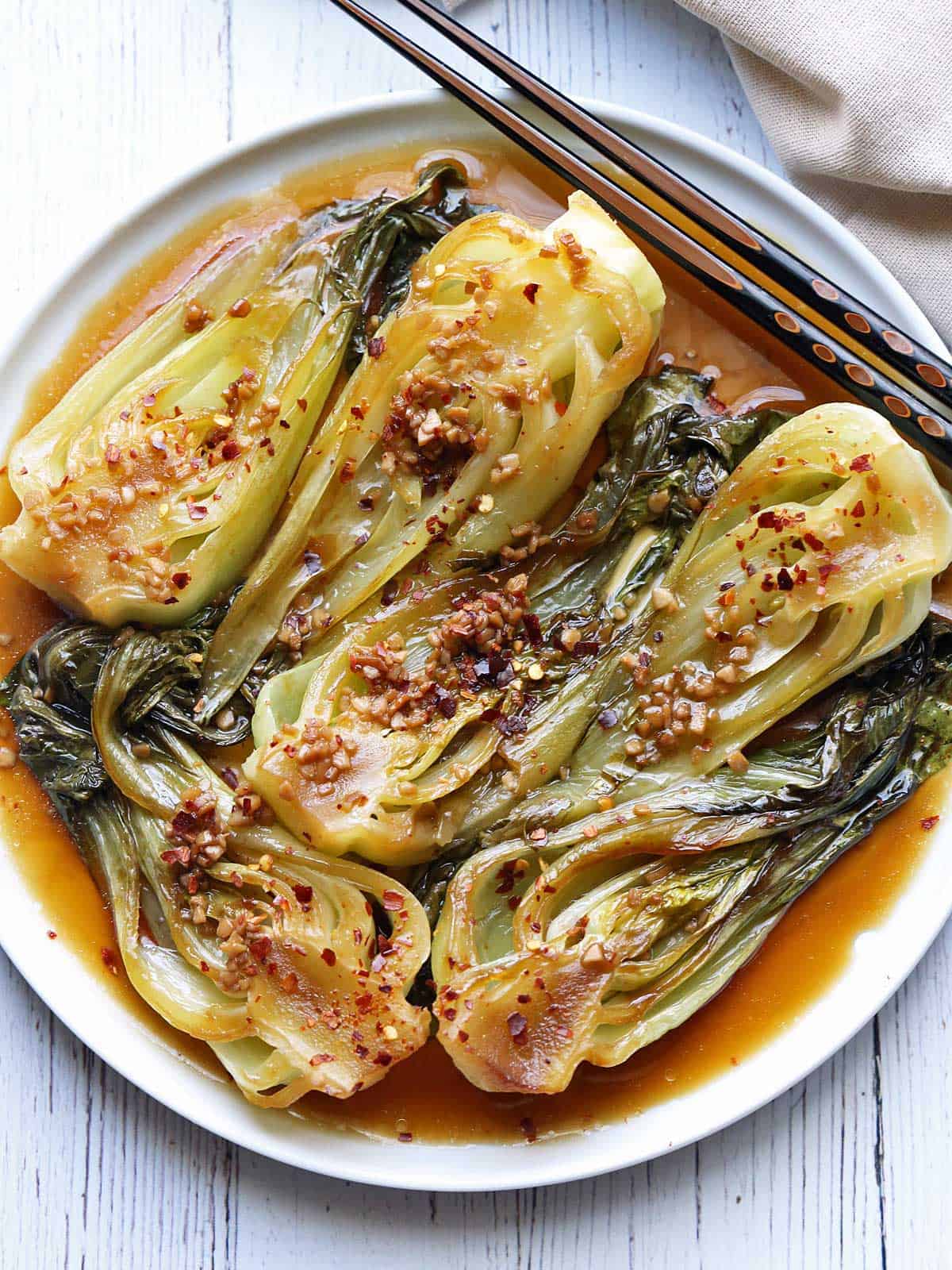
This sautéed bok choy is a quick and flavorful side dish, ready in just 15 minutes. It features baby bok choy cooked with garlic, soy sauce, and rice vinegar, then finished with a drizzle of sesame oil and a sprinkle of red pepper flakes for a touch of heat. It's the perfect addition for any Asian-style meal!
Ingredients and Variations
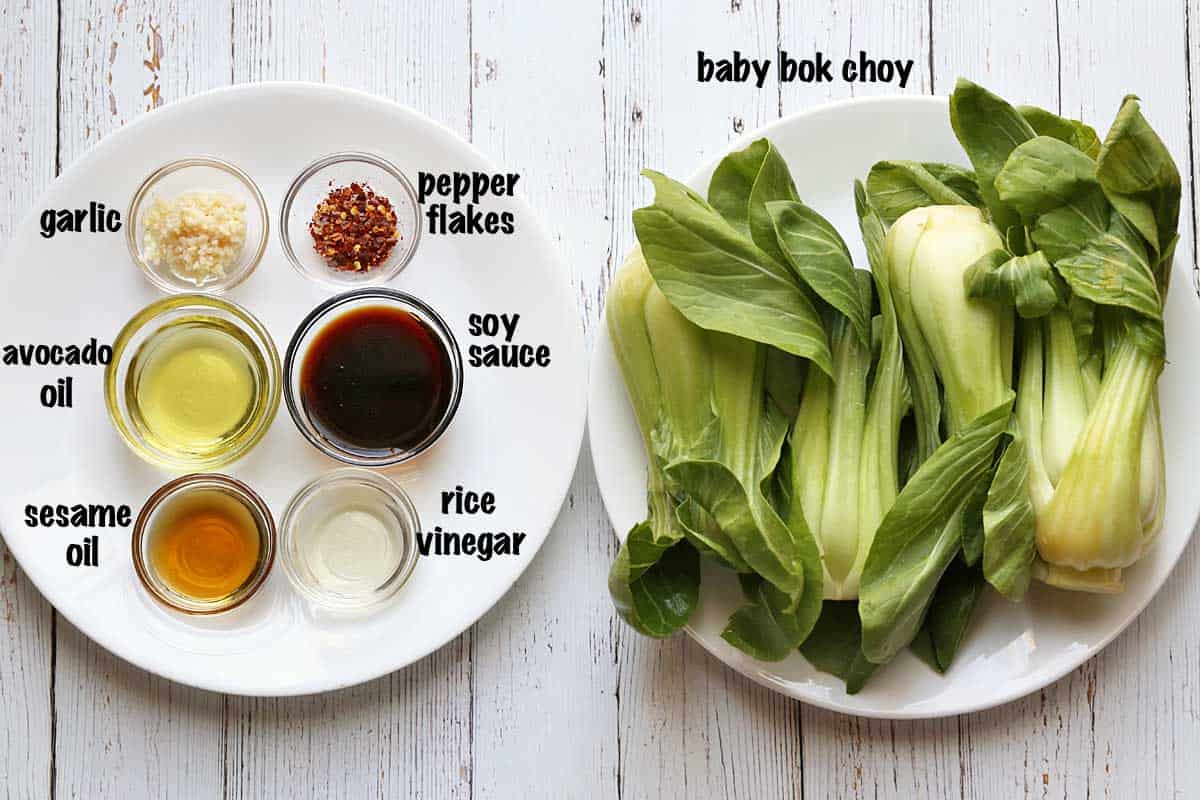
See the recipe card for exact measurements. Here are my comments on some of the ingredients.
- Baby bok choy: I get it at my local supermarket or Whole Foods.
- Fresh minced garlic: I don't recommend using garlic powder in this recipe. Sometimes, I add a teaspoon of grated fresh ginger in addition to the garlic. You can add both at the same time.
- Rice vinegar: If you don't have rice vinegar, you can use white wine vinegar. Please don't use distilled white vinegar. It's too acidic.
- Toasted sesame oil: I love drizzling it on top of the finished dish. It greatly enhances its flavor.
- Red pepper flakes: Add a hint of spice and a nice color to the dish. Instead of red pepper flakes, you can add a tablespoon of hot pepper sauce when you add the soy sauce and rice vinegar. Just remember that cooking pepper sauce can create fumes that some people are sensitive to.
Instructions
The detailed instructions and step-by-step photos are included in the recipe card. Here's a quick overview.
Clean the bok choy, dry it, and cut it lengthwise. Briefly sauté garlic, then add the bok choy and drizzle it with soy sauce and rice vinegar.
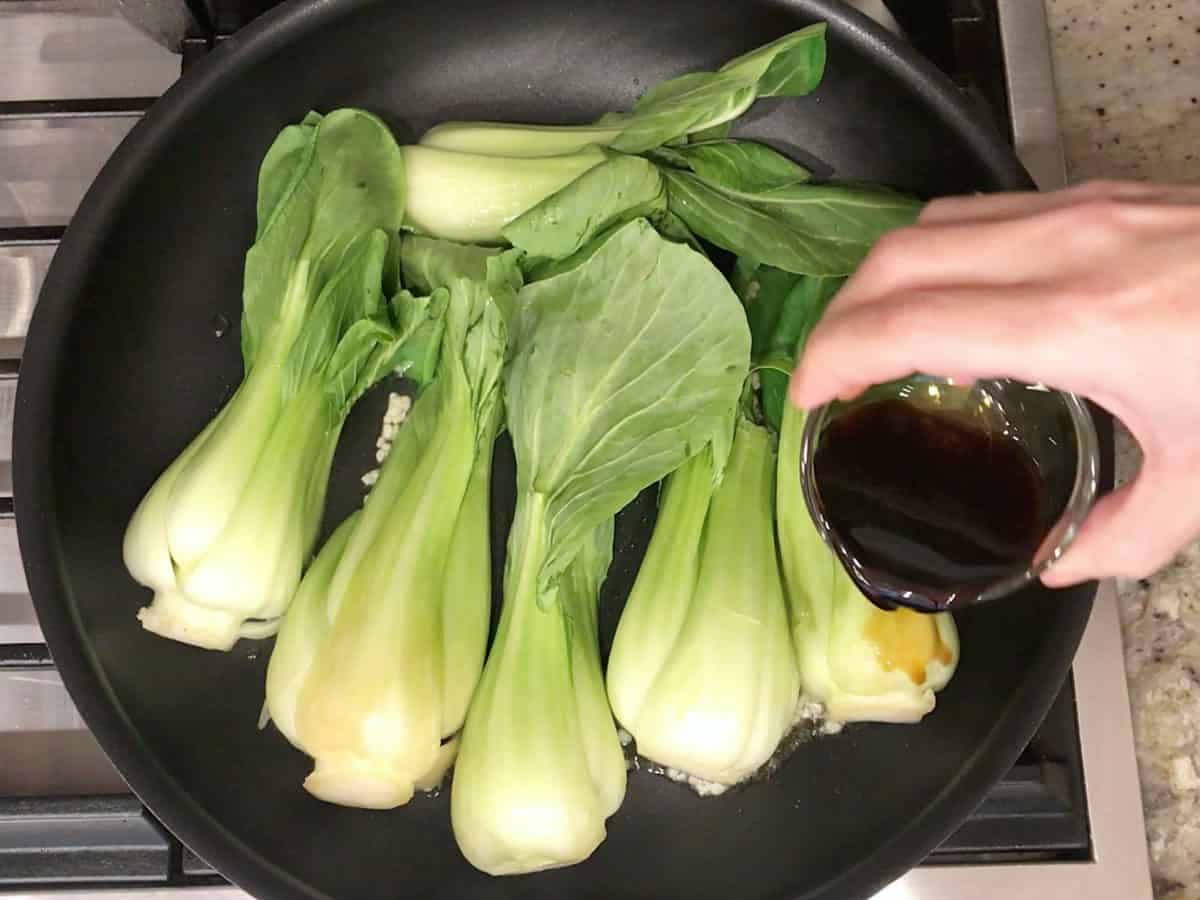
Cover and cook until the cores are fork-tender and can be easily pierced with a fork, for 3-5 minutes.
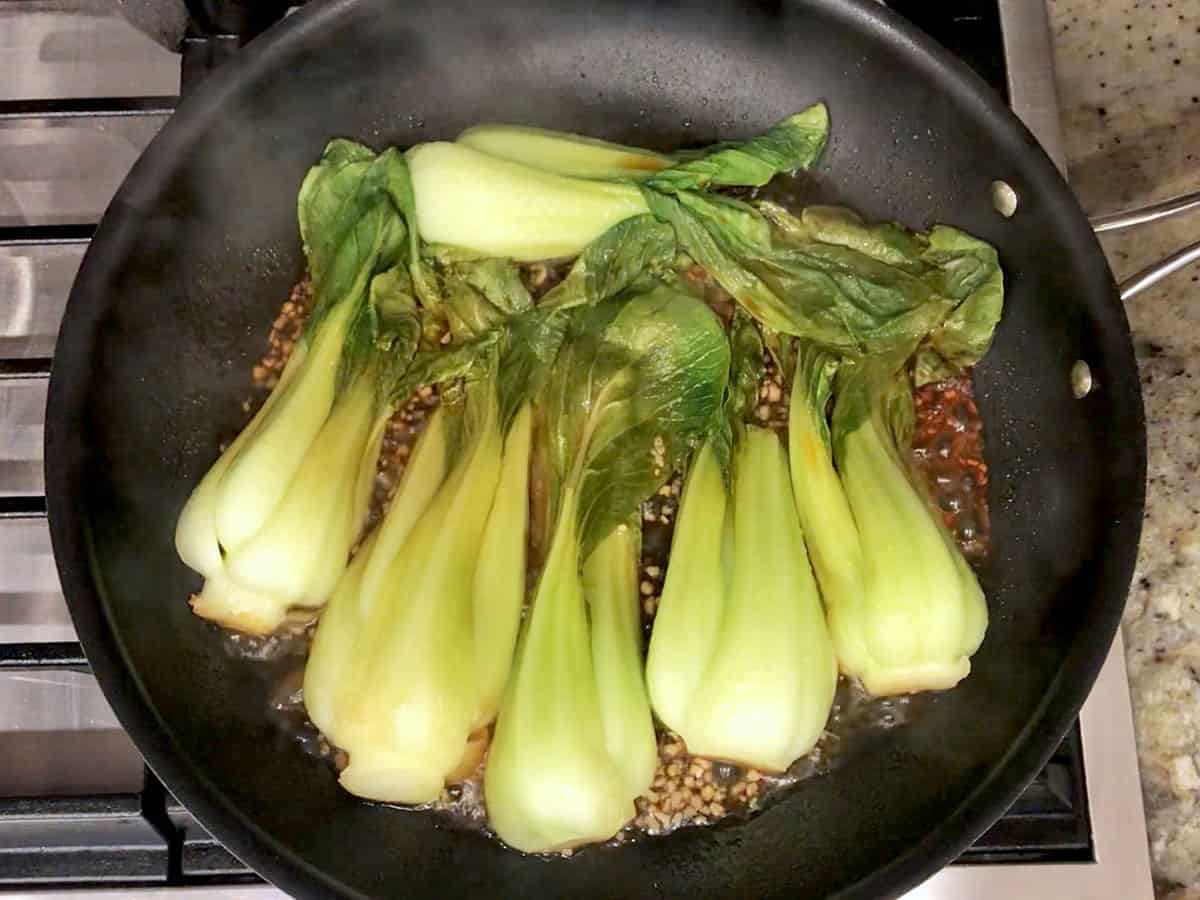
Transfer to a serving platter and pour the cooking liquids on top. Drizzle with sesame oil, sprinkle with red pepper flakes, and serve.
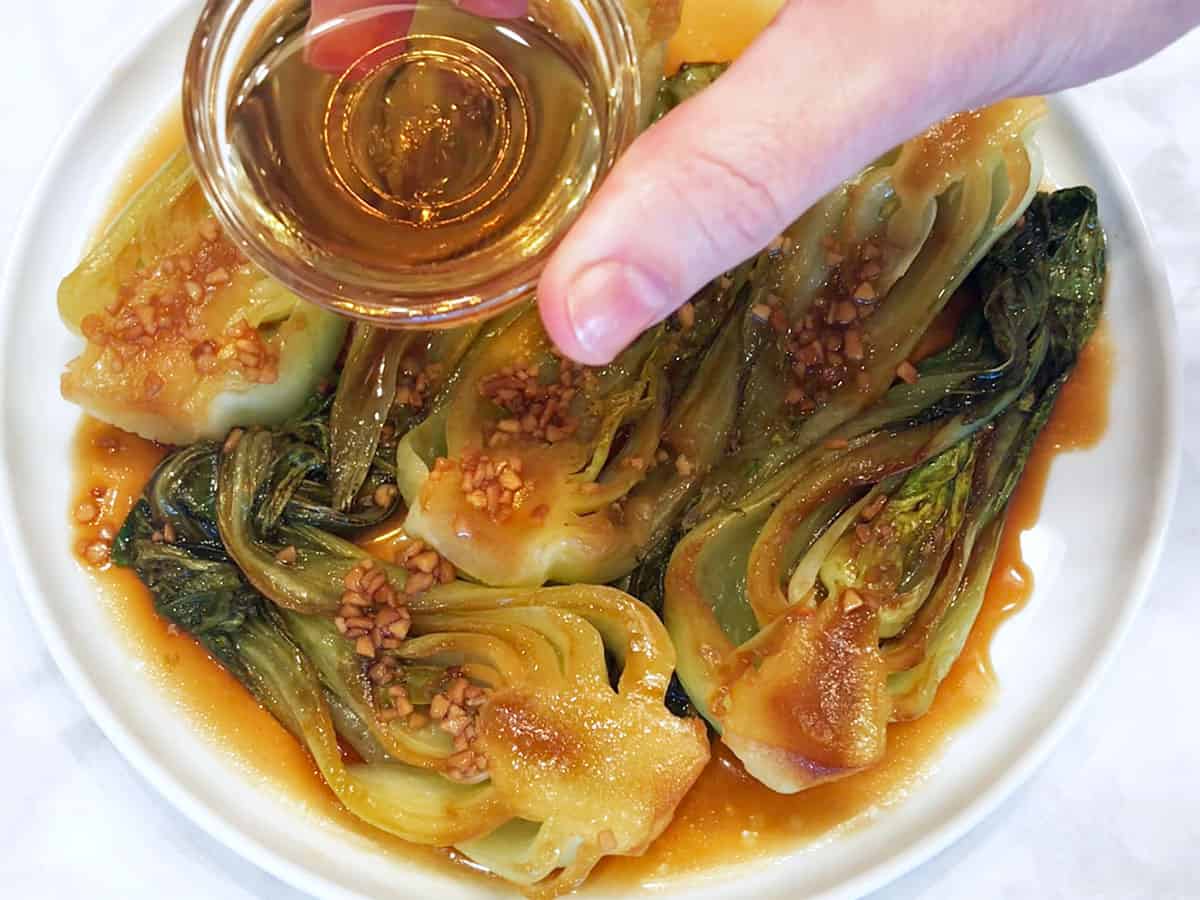
Excellent recipe. I did add ginger and it was wonderful. Will make again.
Mitzie
Read more comments
Recipe Tips
- There's no need to add salt. The soy sauce adds plenty of saltiness. However, it's always a good idea to taste and decide for yourself. You can always sprinkle the finished dish with extra salt.
- To prepare bok choy for cooking, cut it in half lengthwise, then rinse and place it, cut side down, on a clean kitchen towel to dry. The core can hide dirt, so you should rinse it thoroughly.
- Storage: You can keep the leftovers in an airtight container in the fridge for 3-4 days. Gently reheat them in the microwave, covered, at 50% power. Much like roasted cabbage and steamed cabbage, this is one of those recipes where the leftovers are excellent, even on the fourth day.
Serving Suggestions
I usually serve this side dish with an Asian-style main dish such as:
Recipe Card
15-Minute Sautéed Bok Choy Recipe
Video
Ingredients
- 3 baby bok choy - 4 ounces each
- 2 tablespoons avocado oil
- 1 tablespoon garlic - minced
- 2 tablespoons reduced-sodium soy sauce - or a gluten-free alternative
- 1 tablespoon rice vinegar
- 1 tablespoon toasted sesame oil
- ¼ teaspoon red pepper flakes
Instructions
- Rinse and dry the bok choy. Then, cut it in half lengthwise. The core can hide dirt, so you should rinse it thoroughly.
- Heat the oil in a large 12-inch lidded skillet over medium-high heat. Add the garlic and cook, stirring, for 30 seconds.
- Add the bok choy in a single layer, cut side down. Drizzle it with soy sauce and rice vinegar.
- Cover the pan and cook until the core is fork-tender, 3-5 minutes. If the bottom of the pan becomes too dry, add a tablespoon or two of water.
- Remove the pan from the heat. Arrange the bok choy on a serving plate. Drizzle it with the pan juices and sesame oil and sprinkle with red pepper flakes. Serve immediately.
Notes
- There's no need to add salt. The soy sauce adds plenty of saltiness. However, it's always a good idea to taste and decide for yourself. You can always sprinkle the finished dish with extra salt.
- You can add grated fresh ginger in addition to the garlic. You can add both at the same time.
- Instead of red pepper flakes, add a tablespoon of hot pepper sauce when you add the soy sauce and rice vinegar. Just remember that cooking pepper sauce can create fumes that some people are sensitive to.
- The leftovers keep well in an airtight container in the fridge for 3-4 days. Gently reheat them in the microwave, covered, at 50% power.
Nutrition per Serving
Save this Recipe!
We will also add you to our weekly newsletter. Unsubscribe anytime. See healthyrecipesblogs.com/privacy/ to learn how we use your email.
Disclaimers
Most recipes are low-carb and gluten-free, but some are not. Recommended and linked products are not guaranteed to be gluten-free. Nutrition info is approximate. Please verify it independently. The carb count excludes non-nutritive sweeteners. Please read these Terms of Use before using any of my recipes.




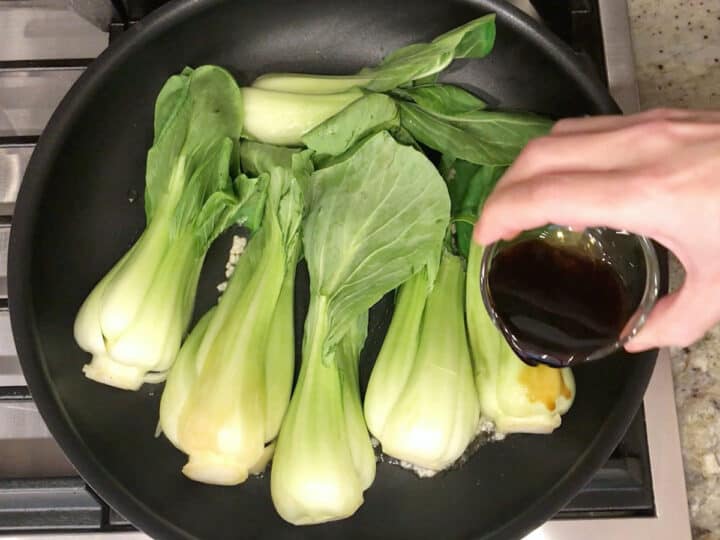

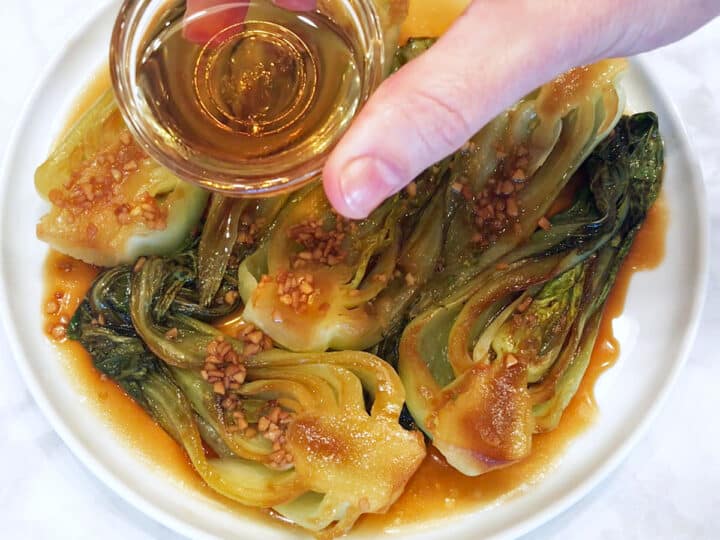
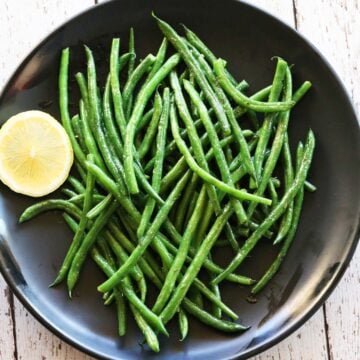
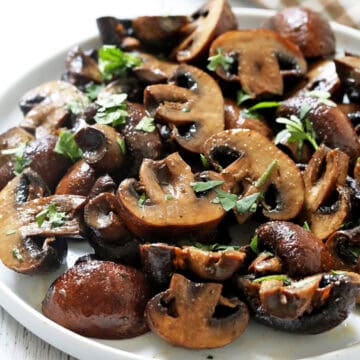

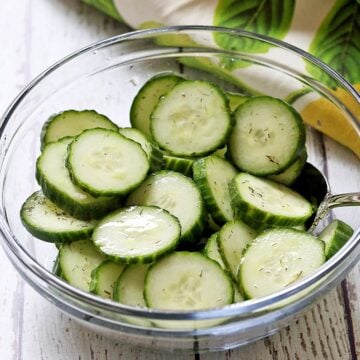
Mitzie says
Excellent recipe. I did add ginger and it was wonderful. Will make again.
Vered DeLeeuw says
Glad you liked it, Mitzie! Thanks for the review.
Haleigh B says
My family enjoyed this recipe. I served it with your soy sauce chicken. Next time, I'll follow your advice to add ginger.
Vered DeLeeuw says
I'm so glad this recipe was a success, Haleigh! Thanks for taking the time to review it.